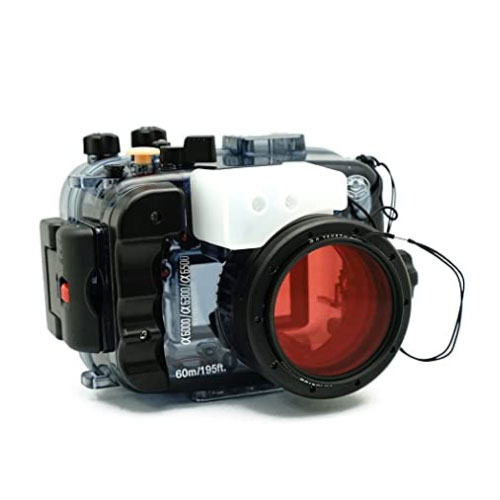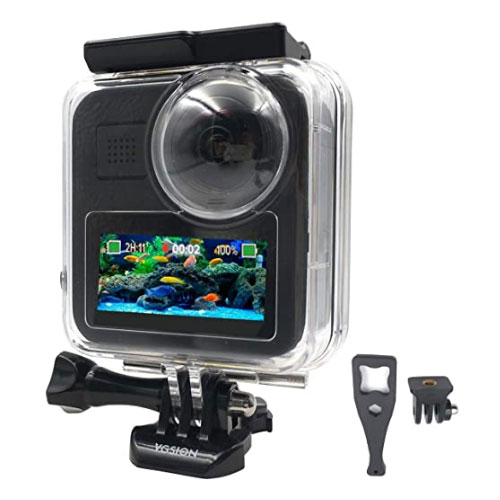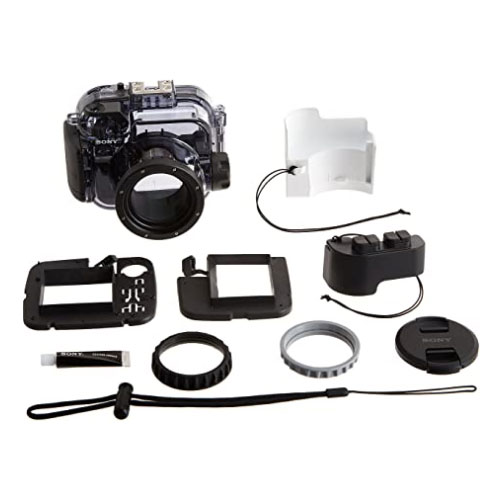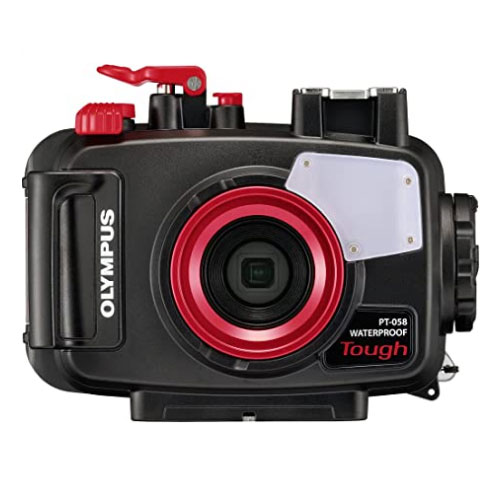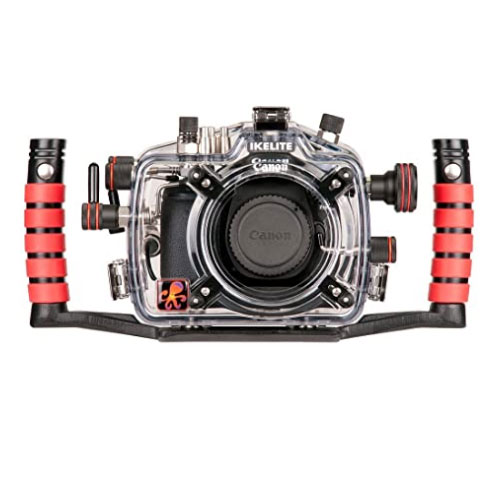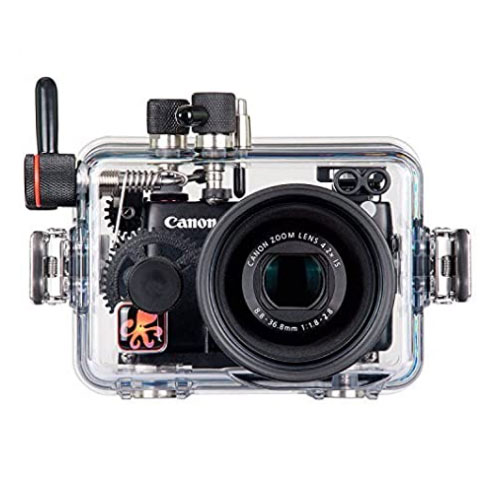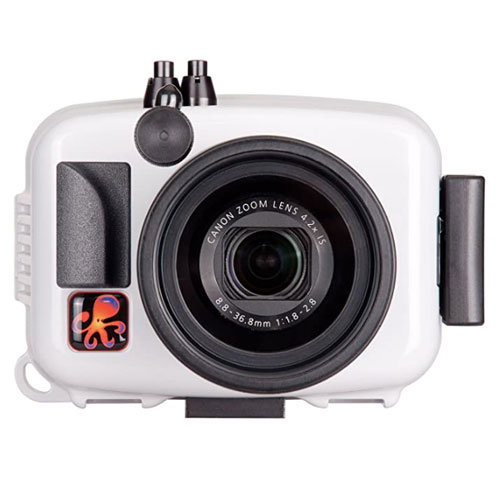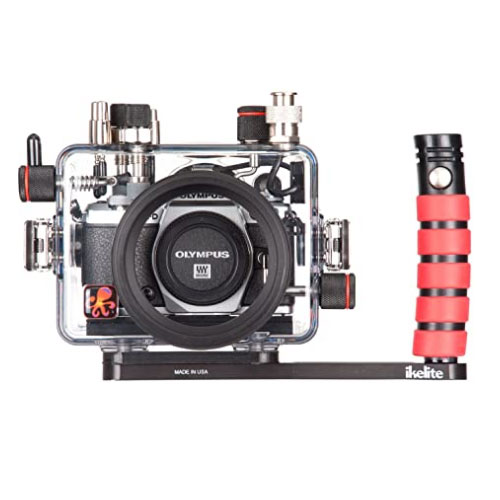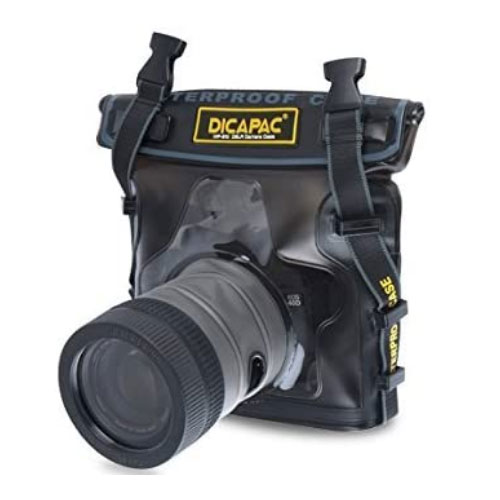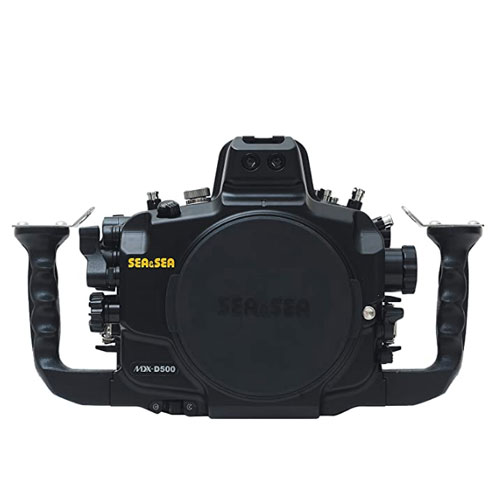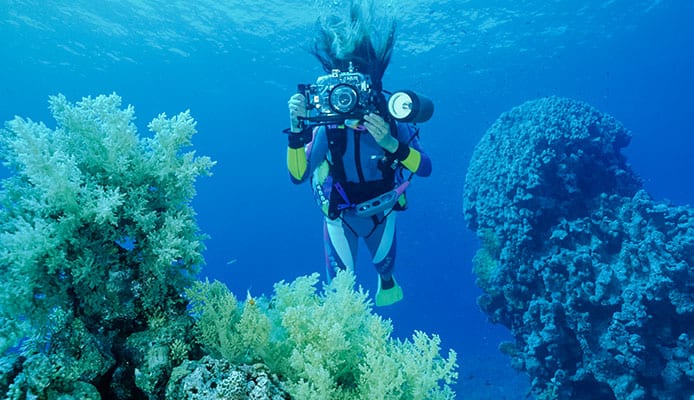
-
1.
-
2.
-
3.
-
4.
-
5.
Underwater photography can be a significant part of your scuba diving adventures. Many of us enjoy taking photos of the amazing things we see under the waves like coral reefs, colorful fish, or shipwrecks, but to be able to do this, you need a camera that will function properly underwater without risking damage.
Here’s where underwater housings come in. They shield your camera from water while allowing you to continue operating it and take stunning photos. There are a variety of choices in this field, depending on whether you are an amateur photographer or a professional. We have selected some amazing housings which suit different needs but to get a clear idea of what you should get be sure to check our buying guide to the best waterproof housings.
Let’s get started.
OUR TOP PICK
Sea Frogs For Sony Camera Housing
- Stand Out Features - Why We Love It
- Two fiber-optic ports
- Leak detection
- Can hold six different lenses
Dimensions: 5.9 x 5.5 x 7.1 inches
Weight: 2.3 pounds
Compatible cameras: Sony a6500, Sony a6300, Sony a6000
Usable depth: 195 feet
EDITORS CHOICE
VGSION GoPro Max Camera Housing
- Stand Out Features - Why We Love It
- Made from strong and reliable acrylic
- Comes with plenty of useful accessories
- Lens treatment improves light transmission
Dimensions: 5.67 x 3.39 x 2.6 inches
Weight: 4.2 ounces
Compatible cameras: GoPro Max
Usable depth: 40 meters/131 feet
BEST VALUE
Sony RX100-series Camera Housings
- Stand Out Features - Why We Love It
- Allows flash
- Detachable diffuser
- Large shutter button lever
Dimensions: 6.13 x 5.13 x 5 inches
Weight: 1.43 pounds
Compatible cameras: Sony RX100-series cameras
Usable depth: 130 feet
Olympus PT-058 TG-5 Camera Housing
- Stand Out Features - Why We Love It
- Full camera functionality is retained
- Compact
- Optional adapter for other lenses
Dimensions: 6.2 x 3.2 x 4.8 inches
Weight: 1.2 pounds
Compatible cameras: Olympus TG-5
Usable depth: 150 feet
Ikelite Nikon D810 Camera Housing
- Stand Out Features - Why We Love It
- Can be used down to 200ft
- Quick-release handles
- Slightly negative buoyancy
Dimensions: 9.6 x 6.9 x 6.5 inches
Weight: 9.4 pounds
Compatible cameras: Nikon D800, Nikon D810
Usable depth: 200 feet
Ikelite Canon G7X Camera Housing
- Stand Out Features - Why We Love It
- Interchangeable lens ports
- Completely see-through
- Hand-made
Dimensions: 6.5 x 9.75 x 6.5 inches
Weight: 4 pounds
Compatible cameras: Canon G7 X
Usable depth: 200 feet
- Stand Out Features - Why We Love It
- Camera functions are indicated
- Versatile, mounts on a tripod
- Lightweight
Dimensions: 6.9 x 5.5 x 6.4 inches
Weight: 1.6 pounds
Compatible cameras: Canon G7X II
Usable depth: 200 feet
Ikelite Olympus OM-D E-M5 Mark II Camera Housing
- Stand Out Features - Why We Love It
- Compact size
- Built-in TTL circuitry
- Flash bulkhead connector
Dimensions: 6.9 x 6.97 x 5.31 inches
Weight: 8.7 ounces
Compatible cameras: Olympus OM-D E-M5 Mark II
Usable depth: 200 feet
DiCAPac WP-S10 Camera Housing
- Stand Out Features - Why We Love It
- Soft casing floats without issues
- Extending lens port works with any DSLR camera
- Almost all camera controls remain available
Dimensions: 6.5 x 9 x 11 inches
Weight: 15.9 ounces
Compatible cameras: All DSLR or large mirrorless
Usable depth: Surface
Sea&Sea MDX Nikon D500 Camera Housing
- Stand Out Features - Why We Love It
- Controls glow in low light
- Leak sensor
- Usable to 330ft
Dimensions: 15 x 10 x 6 inches
Weight: 6 pounds
Compatible cameras: Nikon D500
Usable depth: 330 feet
How To Choose The Best Underwater Camera Housing – Buying Guide
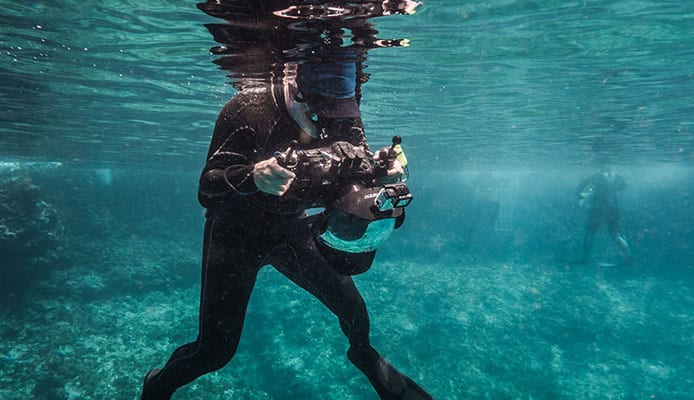
The most important thing to look for in an underwater camera housing is compatibility with your diving camera. This way you get both the security and the functionality that you need. Housings should be durable when put to the test. Of course, be careful and pay attention to the price tag. As you’ve seen, some are affordable while others cost several thousand dollars – sometimes as much as the camera itself.
Access To Controls
In addition to protecting your camera, housing should allow you to easily access its different functions. Here’s the catch – not all housings are the same and some will have more controls compared to others. This is a matter of design, and manufacturers do this either to cut the building cost or because the control itself isn’t very accessible.
Look for housing that will grant control to important features of the camera, and see if the layout fits you. It’s not a bad idea to see what other people had to say about functionality. Also, controls should be large, especially if you’re diving in cold water. You’ll be wearing gloves and the precision will be lower, so think about this too.
Depth Rating
You will find a depth rating on every scuba diving camera housing, which represents how deep it’s safe to take your camera. If you exceed this limit, you are risking malfunction, leakage, and even cracking. The depth limit for recreational scuba diving is 130ft. If you’re not planning to go deeper, most housings will do the job. However, if you’re a technical diver and go deeper, you need housing that is rated up to 200 or 300ft.
Material
Water housings are usually made from polycarbonate (strong plastic) or aluminum. Some products are a combination of the two, with other additions. Polycarbonate housings are usually cheaper, lighter, and often more buoyant. On the other hand, they are not as durable and can be too bulky. Aluminum is a better choice in terms of quality, but these housings can be expensive. However, they will last for a longer time and usually have a greater depth rating.
Underwater Buoyancy
For ease of use and practicality, the housing with your camera inside should be neutrally buoyant. This way the camera won’t float up and down from you when using it. Housings themselves will most often float, especially polycarbonate ones which have more space for air inside. When you add the camera, its weight will bring the balance to neutrality. Aluminum housings can have a small negative buoyancy, so you’ll sometimes need to buy buoyant arms to compensate for it.
Port Type And Mounting
A lens port is a part you shoot through. It’s very important since it greatly influences your results. Some housings will have the port permanently attached, while more sophisticated products allow interchangeable ports. However, mounting mechanisms are not the same, and a port that is reliable and simple to use is the best choice.
For DSLR cameras you will often need to buy a port to match the lens. Most underwater photographers like using a wide-angle lens and dome ports are best for this purpose. On the other hand, if you want to shoot macro images and have that lens type on the camera, you’ll need a different port.
Ports can be made from either polycarbonate or glass. The former is cheaper, and while they give great results they are more prone to scratching. Glass ports offer better quality, but they can be very pricey. Also, they aren’t available for some housings. Finally, some water housings will come without a port, so you’ll need to get one separately.
Ergonomics And Size
When discussing design, ergonomics shouldn’t be overlooked. It’s not just access to the function that matters, it’s whether you can easily use it or not. This is where you can separate the best underwater camera housings from the rest. Size also plays a part in this, since the housing shouldn’t be too big and difficult to hold. Also, you will sometimes need to use the camera with only one hand, so the housing design should accommodate that.
Availability
Housing availability depends on the type of camera you have. Since they are made to be highly specific, some models will have no alternatives to housings offered by the manufacturer itself. Luckily, camera brands that are popular among underwater photographers will likely have a wider choice of options. If you’re just beginning to venture into underwater photography and don’t have a camera yet, it’s not a bad idea to look at both simultaneously, so you can find the setup you like.
Expandability
Different add-ons exist to further improve your camera setup. What is great is that these are often compatible with many housing types and brands, so you can buy one-for-one housing and use it on the next one too. Also, you can specifically choose a housing to pair with additions you wish to have. Three basic add-ons are strobes, trays with arms, and wet lenses.
A strobe is an underwater flash, which will often be required to make vivid photos. The deeper you go, the different wavelengths of light are absorbed by the water and disappear, with red being lost at about 15-20ft of depth. For this reason, you’ll need a strobe, which creates a strong light flash which is much better than a steady-on light. A less sophisticated solution to this color problem is a red filter you attach to the port, which some manufacturers include with the housing.
If you choose to buy a strobe, you will probably need a tray and arms. The tray is attached underneath the housing, while the flexible arms are connected to the tray. You can then mount the strobe on the arms and position it any way you like so it can give proper lighting to your photos. Some housings (like several we featured) already have handles so you can attach arms to them without using the tray.
Finally, a wet lens allows you to quickly change the field of view of your camera without having to take it out of the housing. These lenses can be mounted in front of the lens port, and both macro and wide-angle lenses are available. It can be useful to have one since it gives you bigger freedom and flexibility.
FAQs
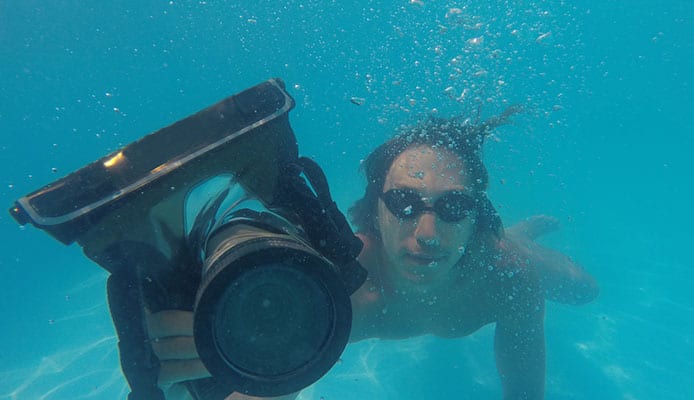
Q: What Is An Underwater Camera Housing?
It is a specially designed housing that allows you to use your camera underwater. It’s made from high-quality materials with a smart design, allowing you to take amazing photos without any drop of water coming into contact with your precious camera.
Q: Why Do I Need A Camera Housing?
If you want to use your camera underwater, you need protection because it can break if it gets wet. When put in housing, you can use it the same way you would on dry land even several meters under the surface.
Q: Is There An Universal Housing Or I Should Match It To My Camera Brand?
Unfortunately, the best waterproof housings are designed specifically for camera models. This way it can have the full range of functions you need while operating. Always try to match the housing to your camera for the best results, but also to minimize the chance of a hazard occurring. Some housings will fit similar models from the same manufacturer (like the ones for Sony cameras featured at the beginning), but it may require a little tweaking to get everything up and running.
Globo Surf Overview
Underwater camera housings are fantastic equipment that can bring your scuba diving experience to a whole different level. To conclude, don’t compromise on the housing because you risk damaging your precious camera. You don’t need to spend thousands of dollars, but be sure to get a quality product and test it before you take it underwater. Use our list as a guideline so you can get something you will be happy with.
More Water Gear Reviews:
- Water Shoes
- Umbrella
- Polarized Sunglasses
- Kids Water Table
- Deck box
- Kids Rash Guard
- Floating Water Mat
- Waterproof Running Shoes
- Women’s Sandals
- Waterproof Jacket


